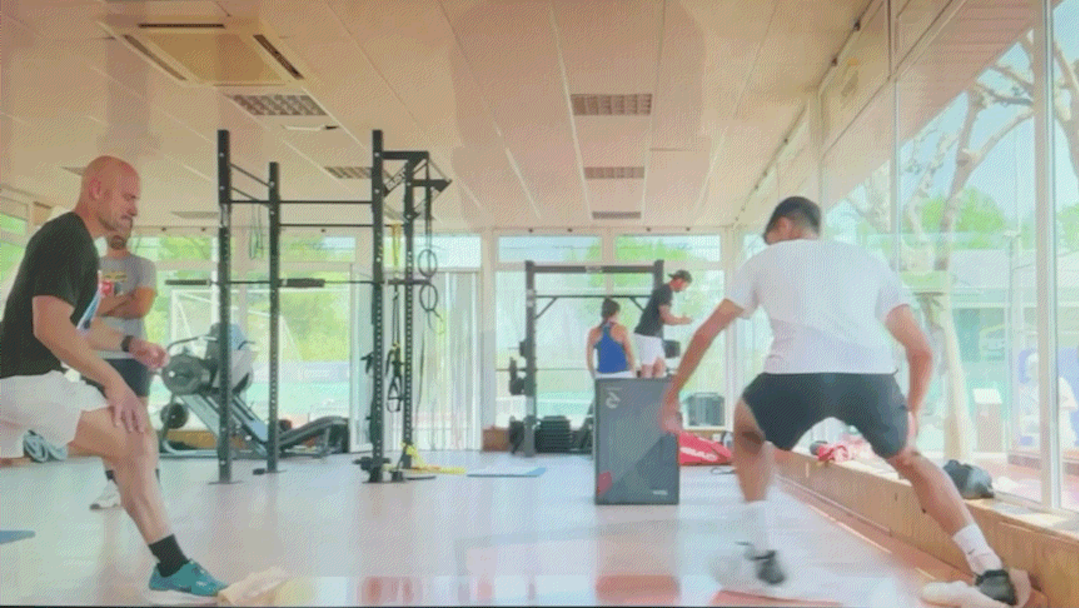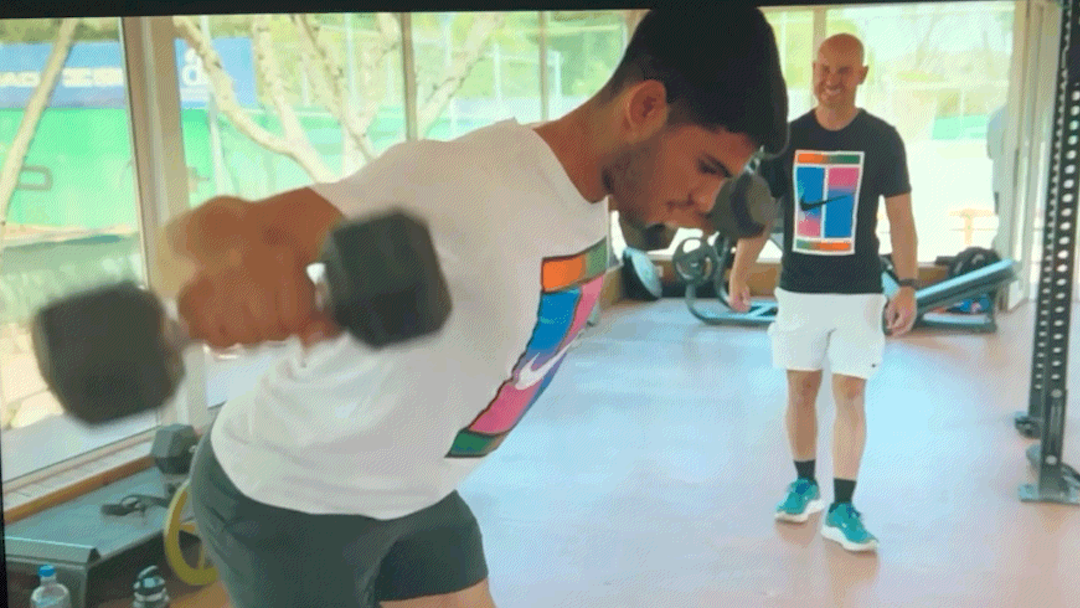It’s been a long time since I have featured a tennis training technique pulled from one of the Tennis Channel “Bag Check” videos. On the off chance you don’t regularly watch the tennis channel (and if not, what are you doing here?), “Bag Check” is a short infotainment video in which professional players reveal the contents of their tennis bags. These thinly veiled product placement opportunities almost always lead with the player extolling the virtues of their racquets. However, the most interesting part is the insight into the other tools, training gear, and personal items in the bag. Recreational players can benefit from paying attention to what the pros carry.
Juan Monaco is a retired Argentinian tennis player known for his clay-court prowess. He won nine ATP singles titles and reached a career-high ranking of No. 10 in 2012. Monaco was featured in a Bag Check video uploaded to YouTube by the Tennis Channel in 2010. One of the items he pulled out of his bag was a length of resistance tubing in a raw form factor that I have not written about previously. He also demonstrated some novel training techniques using that item.
Monaco’s resistance tube does not have commercially manufactured handles. The grip is simply a short loop tied off by a knot. While that means the tube has to be gripped directly, that probably isn’t much of a drawback. The benefit of this form factor is that it saves considerable space in the racquet bag and doesn’t add as much weight as tubes with a plastic handle.
The Bag Check video also contains a short montage of Monaco demonstrating some of the exercises he performs with his tube.

That clip includes Monaco performing a variation of arm circles. That exercise is typically performed by extending the arms straight out at shoulder height and then making small circles while keeping the arms straight. Monaco performs a one-armed variation while holding tension in the resistance band to an unseen anchor point off camera.
Arm circles are beneficial for warming up the shoulder joints and activating the muscles used in serving and groundstrokes. It helps prevent shoulder injuries by preparing the rotator cuff and surrounding muscles for the demands of high-intensity play. They’re a quick and effective way to get the upper body ready for the court.

Resistance Tubes (<- Sponsored Link)
Using resistance tubing to perform arm circles adds a layer of activation that likely intended to enhance the warm-up effect. The added resistance requires more muscle engagement, especially in the shoulder stabilizers and rotator cuff. It’s a clever tweak on a classic warm-up move—and a great reminder that even small adjustments to familiar exercises can elevate their effectiveness. Monaco’s minimalist gear choice and creative use of it is a perfect example of how professional tennis players maximize performance with simple tools. For recreational players, this is an easy and portable way to upgrade your own pre-match routine.
Fiend At Court participates in the Amazon Associates program and receives a paid commission on any purchases made via the links in this article. Details on the disposition of proceeds are available on the “About Fiend at Court” page.



